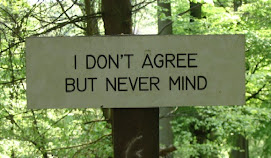Over the next few posts I'll be adding the 'Games' content currently on the Cooper Bike Training web space.
These allow you to train yourself without the necessity of trailing an advanced motorcycling instructor or observer along behind.
Each 'game' is intended to work on a particular aspect of riding skill, awareness, or planning.
Games for grown-ups!
Playing games isn't just for children. Setting aside the "Football, more important than life or death" theory, there are a number of games you can play to help improve your riding.
Pick and choose from the list below. You will find that some of the games build on earlier exercises, so there are benefits to working through in order.
You may also find it helps to print this out and carry it with you for roadside reference, although there are 'armchair' exercises to do in the comfort of your home!
Where In The World?
If you've recently taken a CBT or test-level course, then you will probably have been encouraged to ride about a metre out from the kerb, or in the centre of your line. Real-world riding suggests that moving across the lane width can have significant benefits - but also serious risks.
Enter, two mantras:
• Safety - View - Advantage
• Safety - Stability - View
It doesn't particularly matter which you use, as long as you understand what you can gain from each.
Safety. Children are warned: "Run away from danger". For you, a grown-up, thinking rider, this means keeping as far away from danger as reasonably possible, e.g. if there's a car in the junction to your left, move across to the right of your lane. If there are two hazards (add an oncoming car to the example above) then separate them either in time, i.e. change your speed so that you only encounter one at a time, or distance, i.e. go equidistant between them.
Stability. Choosing the best surface to ride on, i.e good tarmac rather than oil, gravel, horse . . . dust, or sunken drain covers.
View. See and be seen. One classic example of this is following HGVs, several of which now sport warning signs: "If you can't see my mirrors, I can't see you". Try to make eye contact with other road users; if the driver at the junction mentioned above can't see you, it's far more likely that he will pull out! A more extreme example of 'View' is positioning for corners, which is really beyond the scope of this 'game'.
Advantage. Again, this is slightly more involved, but one example is adapting your following position to overtake when leaving a bend, using the advantages of an earlier view and the bike's superior acceleration.
In the second version: Safety - Stability - View, Ask yourself how you chose the position in the lane width you're riding in. Then 'project ahead' and choose - or plan - where you want to be, rather than deciding when you get there - by which time it's really too late to decide that you really ought to be somewhere else!
Mark My Words
Councils often go to great lengths to help road users, by erecting signs, placing 'cat's eyes' and painting markings on the road. Unfortunately, those same road markings may not give quite as much grip as good tarmac.
This game involves accuracy in your riding, as well as forward planning. Building on 'Where In The World', start to really choose the exact place on the road for you.
If you're riding towards a hazard for which the council have painted 'SLOW' on the road, ride between the painted letters rather than over them. After all, if you're braking you may need the best grip available.
Of course, to avoid these markings you will have to read them . . . and ponder on why exactly the council have bothered to paint 'SLOW' on the road. Don't get so engrossed in the game that you forget to watch what's happening in front!
Keep Out Of Line
As a variation on 'Mark My Words', when changing lanes try to avoid line markings or 'cat's eyes'.
P.S. With both these exercises, don't get so fixated on the road surface that you ignore everything else happening around you!
Pick A Gear, Any Gear
Keeping your speed constant, change up and down the gearbox. 2-3-4-5-4-3-2
By careful choice of revs, and care with the clutch, you should be able to make your changes without any noticeable change of speed. This exercise is good for extending the life of your chain, sprockets and clutch. It will also improve the journey for your pillion passenger.
Give yourself a mark from 1-10, for how smooth each gear change is, and try to be aware of what affects this.
Ink Bottle
Building on the smoothness of 'Pick A Gear', imagine that there's a bottle of ink on your pillion seat - without a lid (and that's not 'without a safety helmet').
Try to ride smoothly, so that the ink won't get spilt. Gentle acceleration, smooth gear-changes, ease the brakes on and off, come to a halt carefully avoiding that sudden, fork-compressing stop as you lose the last few mph. Known as 'taper braking', it involves gradually increasing and easing off braking pressure.
Again, this will also improve the journey for your pillion passenger.
Coal/Ink to Newcastle
So you're getting smoother at carrying that ink around, now start to reflect on your riding at the end of each journey: where could you have been smoother?
Wednesday, 2 June 2010
Subscribe to:
Post Comments (Atom)





No comments:
Post a Comment